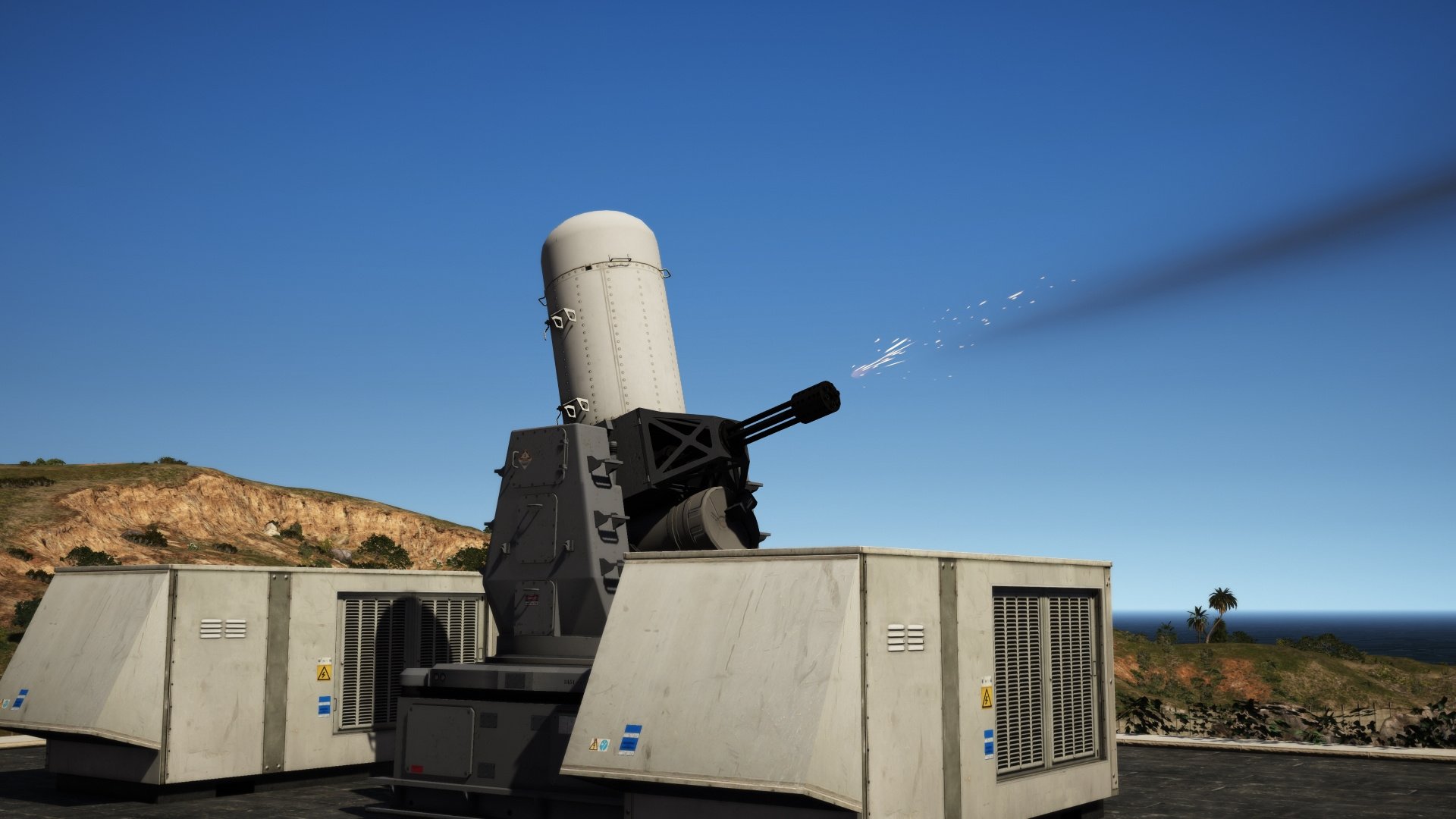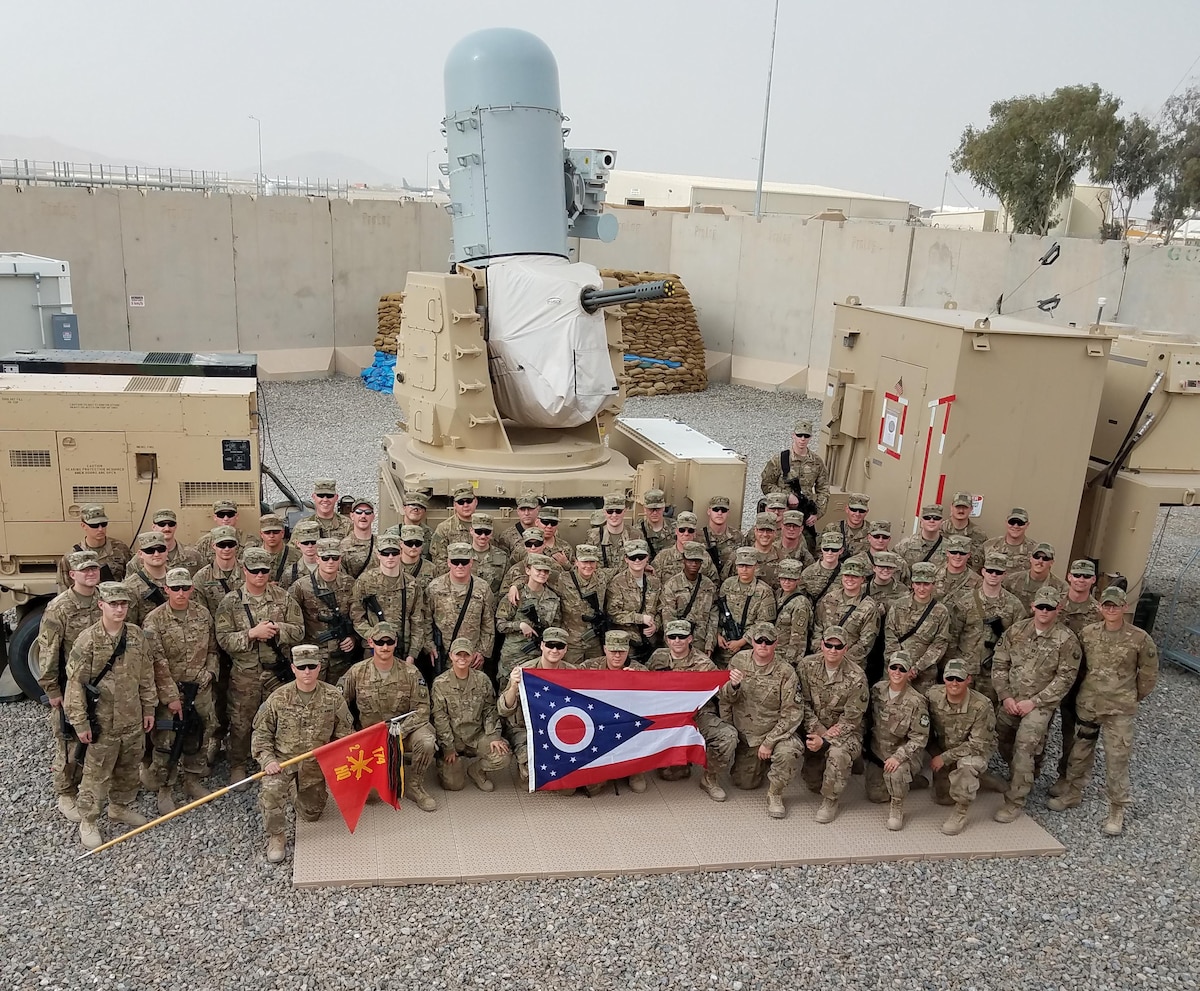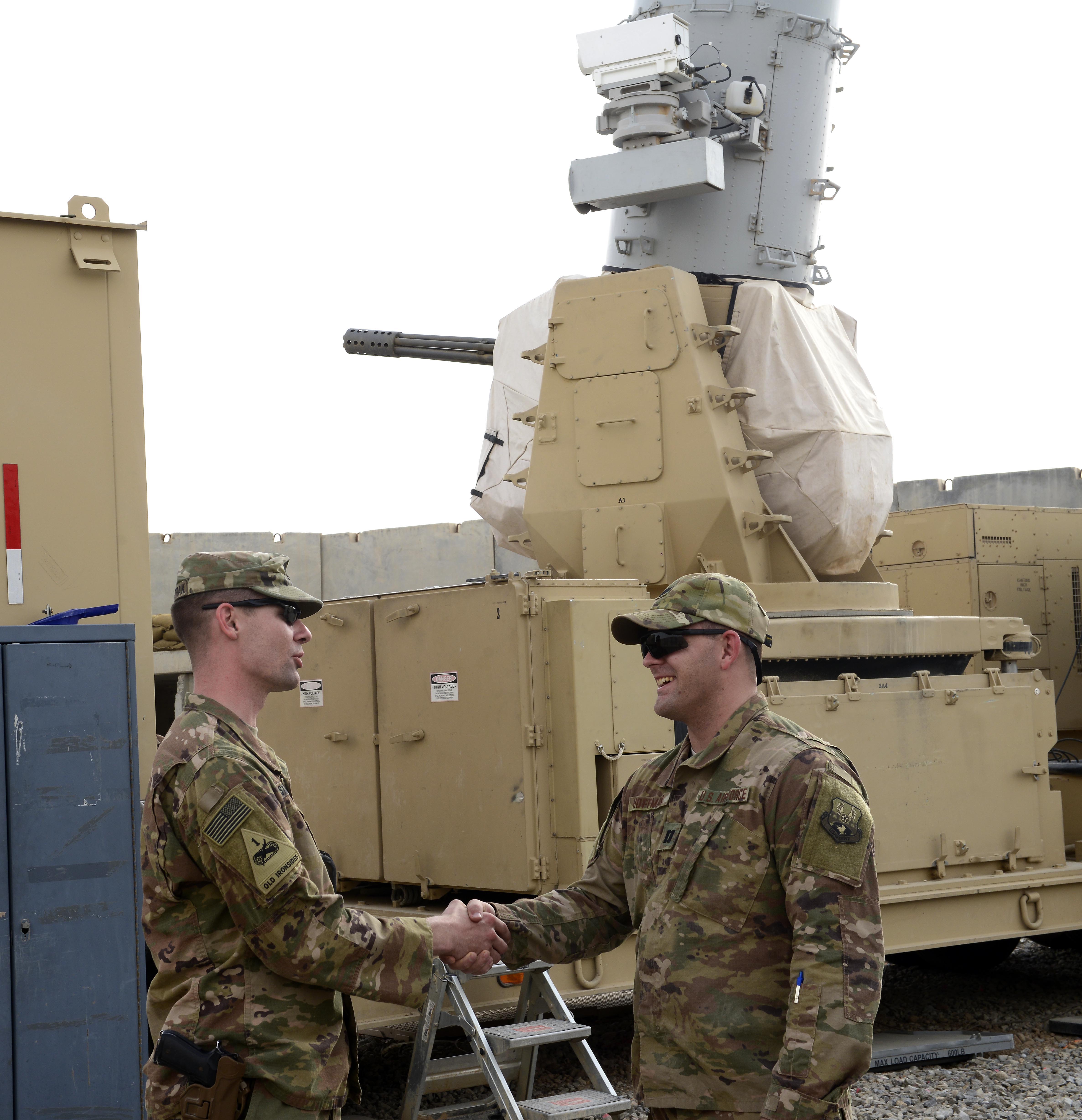C Ram Military - This article requires additional sources for verification. Please help improve this article by adding links to reliable sources. Undisclosed materials may be tested and removed. See sources: "Missiles, Cannons and Mortars" - News · Newspapers · Books · News |
Missiles, artillery and mortars, abbreviated C-RAM or counter-operational weaponry, is a set of systems designed to detect and/or destroy incoming missiles, artillery and mortars before they hit ground targets, or simply are used. early warning.
C Ram Military
The Phalanx 20mm Ground Weapon System (also known as C-RAM) is a land-based version of the US Navy's Phalanx weapon system, a rapid-fire radar-guided weapon designed for close-quarters missile defense. .
Fort Campbell Air Warriors Light Up Oklahoma Sky With C Ram
Both use a forward-looking infrared (FLIR) camera to allow operators to visually identify an incoming fire before it starts. While the Navy's Phalanx systems fire armor-piercing rounds, the C-RAM uses 20mm HEIT-SD (High Explosive Self-Destructive) ammunition originally developed for the M163 Vulcan anti-aircraft system. These rounds explode when they hit the target or ignite the observer, thus greatly reducing the risk of collateral damage from rounds that miss the target.
"Iron Dome" is an Israeli missile system that tracks multiple missiles and is self-guided. Due to the continuous increase of its range and the development of new missiles and missiles as well as the ability of surface-to-air missiles, it has become a complete air defense system. In November 2012, the system intercepted more than 400 rockets fired by Gaza militants towards Israel. Based on the success of the operation, defense correspondent Mark Thompson believes that Iron Dome is the most effective and experimental anti-missile system currently available.
Nächstbereichschutzsystem MANTIS is a fully automatic 35mm C-RAM system by Rheinmetall based on Oerlikon's Skyshield. It has been used by the Luftwaffe since 2011.
A typical Porcupine configuration for the Italian Army consists of four firing bays, one central control station for target identification and weapon control, and a 3D "tracking-type tracking" radar system for target tracking and tracking. Each remote firing unit consists of a 20 mm M61A1 Gatling gun, its ammunition carrier system and a stabilized optoelectronic infrared tracking system.
A C Ram Engaging Incoming Mortars During A Military Exercise. [4288x2848]
DRACO is an anti-aircraft weapons station, R.A.M. and surface facilities. It was developed for the Italian army by OTO-Melara using the Ctauro 8x8 wheeled armored vehicle chassis. Main armament consists of high rate of fire 76mm/62 with automatic ammunition loading system; The 76mm/62 gun is electrically controlled in elevation and traverse and stabilized in elevation. DRACO 8x8 can be mounted on wheeled platforms, combat support operations or convoy interception, as well as tracking vehicles or shelters for point defects. The 76mm/62 main guns and automatic loading system are compatible with all 76mm service cartridges as well as 76mm DART guided rounds. DRACO can be fully controlled by two Operators (commander and gunner) from a remote position inside the bush for a mobile installation or inside a protected command shield for a fixed installation.
The LD-2000 SPAAGM is a Chinese ground-based weapon system. The LD-2000 is based on the Type 730 CIWS of the Chinese Navy. In operation, it pairs with an anti-aircraft radar.
Gatekeeper CIWS is a Dutch weapon system (CIWS) introduced in 1979. It is an autonomous and fully automatic weapon system designed for short-range attacks against ships with highly maneuverable missiles, aircraft and fast-maneuvering surface ships. Once activated, the system automatically tracks and monitors the tire unloading process from detection to removal, including selecting the next priority.

The AK-630 is a fully automatic Soviet and Russian naval weapon system with a 30mm six-barreled revolver. It is mounted in a closed automatic bag and is controlled by radar and television MR-123 detection and tracking. The main purpose of the system is to protect against anti-ship missiles and other guided weapons. However, it can be used against fixed- or rotary-wing aircraft, ships and other small craft, coastal targets, and floating mines.
Ohio Air, Army National Guardsmen Team Up In Afghanistan > 155th Air Refueling Wing > Article Display
The US is increasing its weapons capabilities to counter missile threats. A guided weapon is a remote weapon system that damages a target by emitting highly focused energy, including lasers, microwaves, and particle beams. The US Army awarded Kratos Defense & Security Solutions a $29 million contract in 2016 to develop prototypes of such systems.
US defense contractor Raytheon is developing a laser-based version, where high-cost guided lasers provide increased range and reduce gun hold time. A proof of concept was shown in 2006 with a 60 mm mortar.
The system is designed to destroy short-range missiles, artillery and mortars at a range of 7 km (4.3 mi), which is too short to effectively defeat the Iron Dome system.
The iron beam uses a "tunable laser beam" to engage enemy targets up to 7 kilometers (4.3 mi). Indirect fire from mortars, rockets, and artillery is a critical concern of armed forces during wartime. But thanks to point defense systems such as C-RAM, indirect fire of this kind can be met.
Thales Wins Australian Comms Contract
C-RAM, which stands for "anti-missile, artillery, and mortar," is an indirect fire protection capability (IFPC) weapon system designed to protect ground forces and advance operational bases from missile, artillery, and mortar threats. The C-RAM is not just a single weapon, it consists of a variety of different systems that simultaneously provide the ability to sense, warn, respond and intercept incoming traffic.
C-RAM components include Forward Area Air Defense Command and Control (FAAD C2), Land Phalanx Weapon Systems (LPWS), Light Anti-Aircraft Radar (LCMR), Fire Search Radar, Multi-Functional Radio Frequency Systems Ka - There are bands (MFRFS). ). ), Air and Missile Defense Work Station (AMDWS) and several other components.
The main component of the C-RAM system is the LPWS. This was modified from the MK-15 MOD 29 Block IB, Baseline 2 Close-In Weapon System of the US Navy. Another part is the M61A1 20mm Gatling gun that can fire 4,500 rounds per minute. The Forward Air Defense Command and Control System (FAAD C2) integrates sensors, weapons and warning systems to intercept incoming missiles and artillery.

The main difference between land and sea systems is the choice of ammunition. The Navy's Phalanx systems fire tungsten armor-piercing rounds, while the C-RAM uses HEIT-SD 20mm (high-explosive, self-destructing) ammunition. These bullets explode on impact or when the observer fires, reducing the risk of collateral damage if the bullets miss the target.
Us Embassy In Baghdad Upgrades The C Ram Defense System
The C-Ram's naval equivalent, the Phalanx Close-In Weapon System (CIWS), was first developed as an automatic anti-weapon system in 1973 and the 20mmM61 VulcanGatling cannon has been around since 1959. use to.
The Navy Phalanx system was first considered as a possible land-based option in 2004. Phalanx was chosen in part because it can easily interface with a variety of sensors and systems designed to provide a general protective umbrella for ground areas.
In its land-based configuration, the LPWS is mounted on a wheeled platform to provide better ground stability and mobility for configuration and deployment.
For example, the Centurion C-RAM can be mounted on a trailer or on the back of an Oshkosh truck. In October 2008, Raytheon and Oshkosh introduced the Mobile Centurion, which installs the system on the HEMTT A3 hybrid-electric heavy truck.
St Airborne 'strike Fear' Soldiers Conduct C Ram Exercise At Fort Campbell
The first combat-ready C-RAM system was deployed in Iraq in 2010 to protect the "Green Zone" - the area in Baghdad used as the US embassy. In the tests of this system, it was revealed that it was able to shoot 70-80 percent of the rockets and mortars fired in the control area.
Beginning in 2013, the Army Acquisition Administration (AAE) introduced the C-RAM Interim Army Acquisition Program and authorized the delivery of LPWS weapons and support equipment to IFPC/Avenger battalions. Field work continues.
The C-RAM system successfully defeated hundreds of rockets and mortars that were fired at the Green Zone, thus proving the system's ability as a defense system.
Radar systems with closed-loop detection technology to automatically acquire and track targets and track them. Ku-band, if you don't know, is a part of the electromagnetic spectrum that is in the microwave range of frequencies between 12 and 18 gigahertz (GHz).
Usa Centurion C Ram Mobile Close In Weapon System Image
The system can be integrated with an array of other sensors and systems to help protect a specific location on Earth to provide an overall defense "umbrella."
The gun's main armament is a 20 mm Vulcan Gatling gun, consisting of six optimized tubes complemented by forward looking infrared (FLIR) sensors. Barrels are bolted together at the barrel, center barrel, and breech to provide fire to ensure high accuracy and limit bullet dispersion patterns.
The M61 is a hydraulic, electric, or pneumatic, air-cooled, electrically fired rotary cannon that has long been used on a variety of fixed-wing military aircraft, tanks, and ships. 5 decades. It was originally produced by General Electric.
The US Army also uses the M61 as a mainstay in the M167 and M163 air defense systems.
Iai Unveils New Multi Sensor System To Enhance C Ram And Surveillance Capabilities
Ram mount military discount, military c, dodge ram military edition, ram military discount, dodge ram military, ram acronym military, ram military edition, c ram, military ram, ram trucks military discount, dodge ram military discount, dodge ram military truck



0 Comments